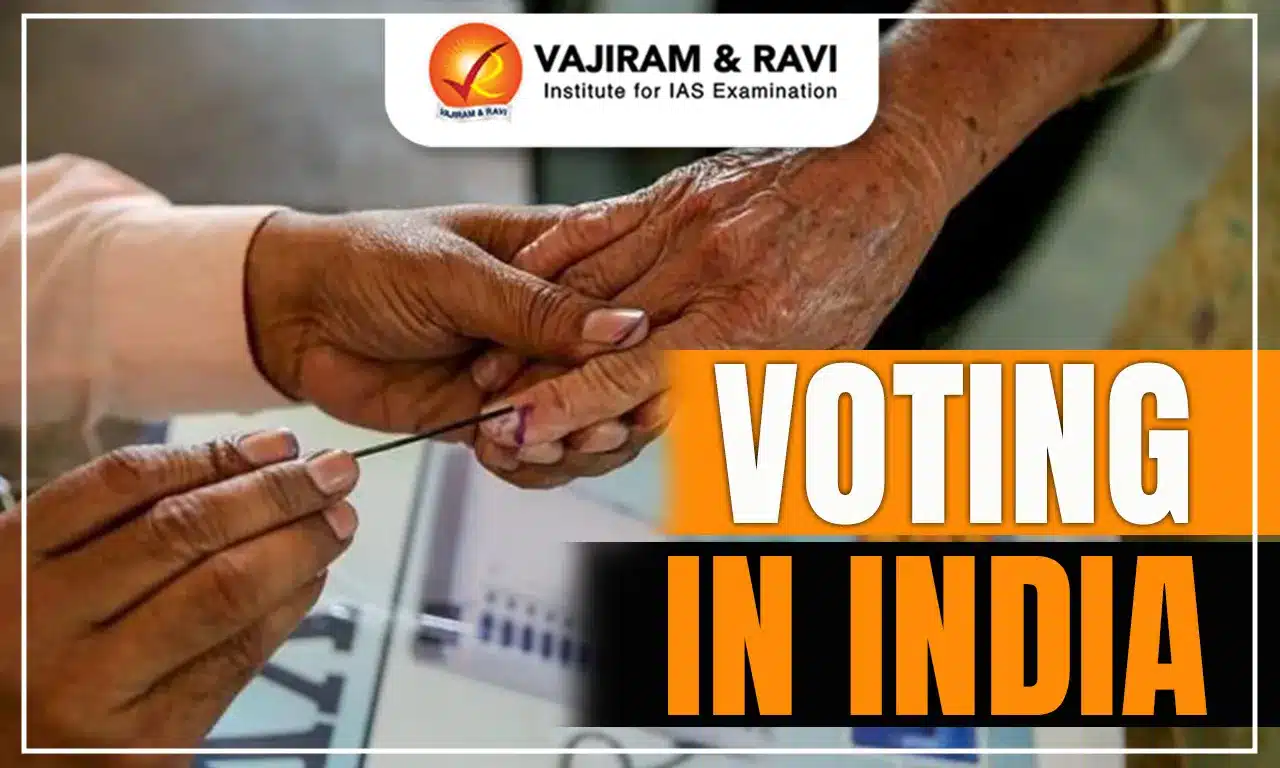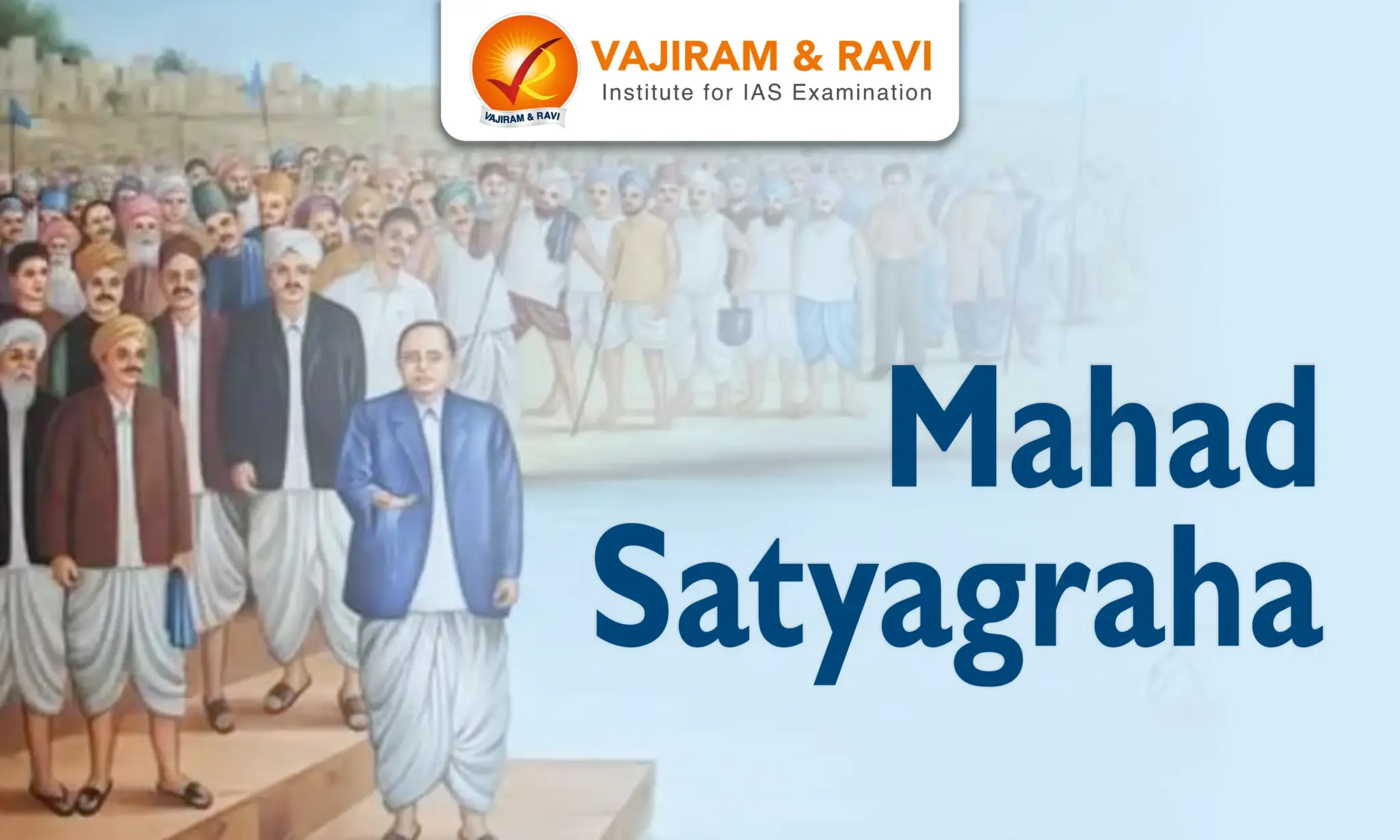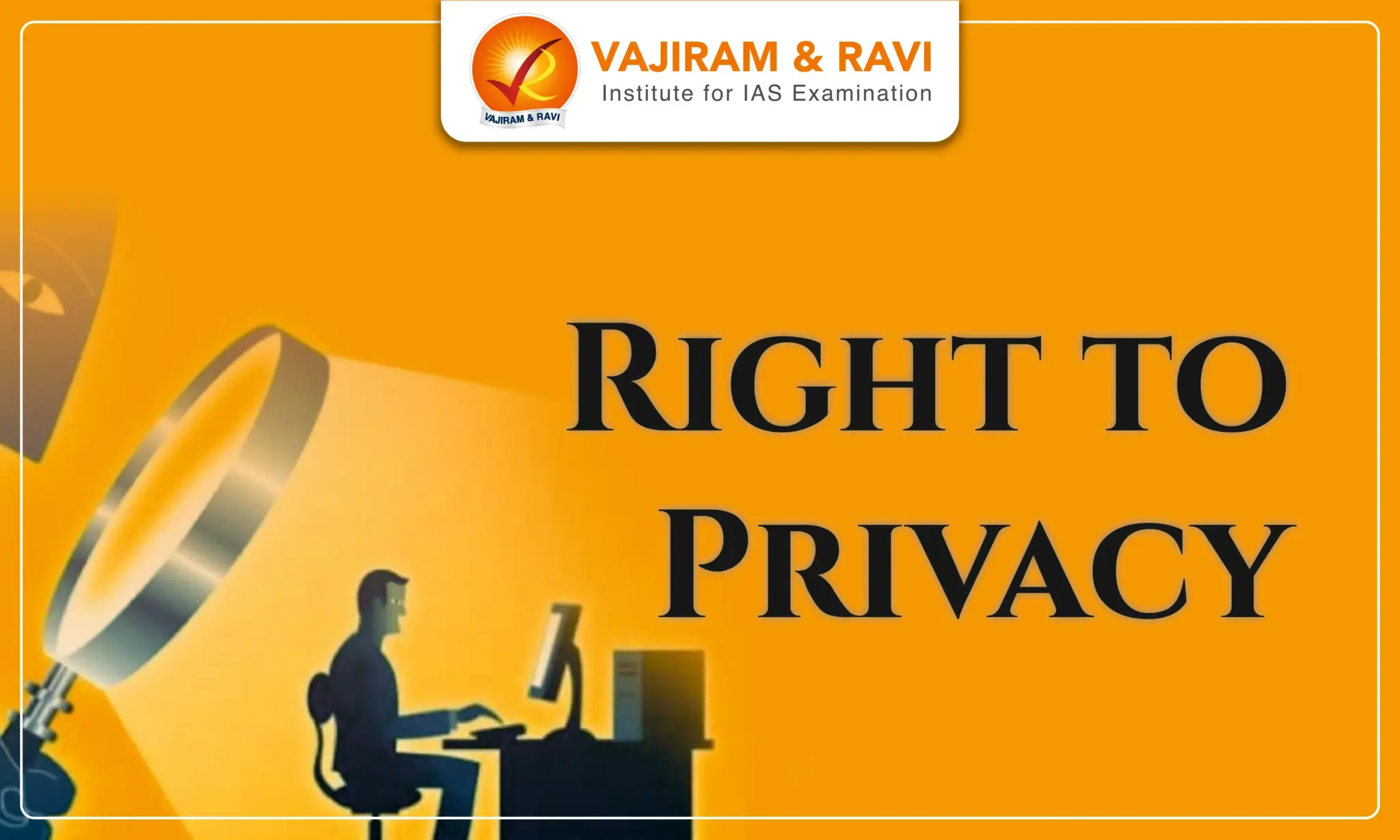What is the importance of voting in a parliamentary democracy?
Voting is essential in parliamentary democracy as it allows citizens to elect their representatives and have a say in the decision-making process of their government.
- Exercise of constitutional right: Voting is a constitutional right that allows citizens to choose their representatives who will make decisions on their behalf. (Article 326)
- Ensuring representation: For adequate representation in the government, people can elect the candidate of their choice, who will represent their interests and needs in the Parliament.
- Holding political accountability: The election is an opportunity to hold politicians accountable for their work based on their previous performances.
- Encouraging participation and engagement: Voting allows citizens to have a say in the direction of their country and to participate in shaping the future of their community.
What are the constitutional and legal provisions pertaining to voting in India?
| Provision | Description |
| Article 324 |
|
| Article 325 |
|
| Article 326 |
|
| RPA, 1950 |
|
| RPA, 1951 |
|
What are the various electoral reforms related to voting implemented since independence?
Voting Reforms before 1996
- Lowering of Voting Age: The 61st Constitutional Amendment Act of 1988 reduced the voting age from 21 years to 18 years for the Lok Sabha as well as the assembly elections in order to make youth a part of the political process.
- Electronic Voting Machines: In 1989, a provision was made to facilitate the use of Electronic Voting Machines (EVMs) in elections. The EVMs were used for the first time in 1998 on an experimental basis in selected constituencies in the elections to the Assemblies of Rajasthan, Madhya Pradesh, and Delhi.
- The EVMs were used for the first time in the general elections (entire state) to the Assembly of Goa in 1999.
- Elector’s Photo Identity Card (EPIC): A decision was taken by the Election Commission in 1993 to issue photo identity cards to electors throughout the country to check bogus voting and impersonation of electors at elections.
Voting Reforms of 1996
Some recommendations of the Dinesh Goswami Committee(1990) were implemented in 1996. These are explained here.
- Prohibition on the Sale of Liquor: The sale of liquor is prohibited during the period of 48 hours ending with the hour fixed for the conclusion of the poll.
- Death of a Candidate: The election would not be countermanded on the death of a contesting candidate before the actual polling.
- Time Limit for Bye-Elections: Now, bye-elections are to be held within six months of the occurrence of the vacancy in any House of Parliament or a state legislature.
- Prohibition of Arms: Entering into the neighbourhood of a polling station with any kind of arms is to be considered a cognizable offense.
- Effective Campaigning Period Reduced: The minimum gap between the last date for withdrawal of candidature and the polling date has been reduced from 20 to 14 days.
Voting Reforms after 1996
- Voting through Postal Ballot: In 1999, a provision was made for voting by certain classes of persons through postal ballot. Thus, any class of persons can be notified by the Election Commission for postal ballot.
- Facility to Opt to Vote Through Proxy: In 2003, the facility to opt to vote through proxy was provided to the service voters belonging to the Armed Forces and members belonging to a Force to which provisions of the Army Act apply.
- Changes in Rajya Sabha Elections: In 2003, the two changes were introduced with respect to elections to the Rajya Sabha includes – the removal of domicile requirement and introducing open ballot system.
- Free Supply of Electoral Rolls, etc: According to a 2003 provision, the Government should supply, free of cost, copies of the electoral rolls and other prescribed material to the candidates of recognized political parties for the Lok Sabha and Assembly elections.
- Introduction of Braille Signage Features in EVMs: The Commission introduced Braille signage features for visually impaired people on the Electronic Voting Machines during the General Elections to the Fifteenth Lok Sabha (2009) and simultaneous Assembly elections in some states.
Voting Reforms since 2010
- Voting Rights to Citizens of India Living Abroad: In 2010, a provision was made to confer voting rights to the citizens of India residing outside India due to various reasons.
- Online Enrolment in the Electoral Roll: In 2013, a provision was made in Registration of the Electors (Amendment) Rules, 2013 for online filing of applications for enrolment in the electoral roll.
- Introduction of NOTA Option: According to the directions of the Supreme Court in 2013, the Election Commission made a provision in the ballot papers /EVMs for None of the Above (NOTA) options so that people may exercise the right not to vote for the candidate
- Introduction of VVPAT: The Voter Verifiable Paper Audit Trail (VVPAT) is an independent system attached with the EVMs that allows the voters to verify that their votes are cast as intended. VVPATs were first used in a bye-election to the Noksen Assembly Constituency of Nagaland held in 2013.
- Photos of Candidates on EVMs and Ballot Papers: According to an Election Commission order in 2015, the ballot papers and EVMs will carry the picture of the candidate with his or her name and party symbol to avoid confusion among the electorates in constituencies where namesakes are contesting.
- Linkage of Voter ID with Aadhaar: The government, in 2021, through the Election Laws (Amendment) Act, 2021 started a campaign to promote the linkage of Voter ID and Aadhaar.
Proposed Electoral Reforms pertaining to voting
- NRI voting: Recently, in 2022, the Election commission has proposed to allow online voting for Non-Resident Indians (NRIs) living abroad.
- Common electoral rolls: There is a proposal to use common electoral rolls at elections conducted by the Election Commission and the State Election Commissions.
- Proxy voting: Proxy voting can be allowed whereby a voter may delegate their voting power to his/her nominee to enable voting on his/her behalf during their absence.
- E-voting: It will allow electors to vote from faraway cities without going to the designated polling station of their constituencies. It can help migrant workers spread across the nation to cast their votes remotely.
What has been the extent of participation of the Indian masses in electoral processes?
Voting pattern and voter turnout in India
India has a large and diverse population, and voter turnout can vary widely depending on the location, demographics, and nature of the election. In general, voter turnout in India has been increasing over the years, although there are still significant variations across different regions and elections.
- Compared to the 1951 Lok Sabha elections, which had a low 45.7% voter turnout, the 2019 general elections to select the members for the 17th Lok Sabha had a record high turnout of over 67%, with around 912 million eligible voters.
- After seven decades since Independence, Women Participation at 67.18% exceeds male participation, which remains at 67.01% in the 2019 Lok Sabha Polls.
- India with its diverse social fabric witnesses large scale voting on the lines of caste, religion and region. These factors tend to have a significant role in the political outcomes in the national and state levels.
- However, the turnout can vary significantly across different states and regions. For instance, in the northeastern state of Nagaland, the voter turnout was around 83%, while in the eastern state of Bihar, it was around 57%.
- In general, urban areas tend to have lower voter turnout compared to rural areas. This could be due to various reasons, such as the lack of awareness, apathy, or difficulty in traveling to polling booths.
- The Election Commission of India has been taking various measures to increase voter turnout, such as increasing the number of polling booths, improving voter education, and making it easier for people to register to vote.
Voting behaviour in India
- Voting behaviour is a type of political behaviour that focuses on how voters act in the context of a democratic electoral system. It is a subject of research that explores the patterns of how people typically vote in public elections and the motivations behind their choices.
- Significance of studying voting behaviour:
- It aids in understanding the political socialization process.
- It facilitates the examination of how democracy as a value is internalized among both the elite and the masses.
- It highlights the true impact of the revolutionary ballot box.
- It provides insights into whether electoral politics align with or deviate from historical trends.
- It helps determine the degree of modernity or traditionality in political development.
Last updated on November, 2025
→ Check out the latest UPSC Syllabus 2026 here.
→ Join Vajiram & Ravi’s Interview Guidance Programme for expert help to crack your final UPSC stage.
→ UPSC Mains Result 2025 is now out.
→ UPSC Notification 2026 is scheduled to be released on January 14, 2026.
→ UPSC Calendar 2026 is released on 15th May, 2025.
→ The UPSC Vacancy 2025 were released 1129, out of which 979 were for UPSC CSE and remaining 150 are for UPSC IFoS.
→ UPSC Prelims 2026 will be conducted on 24th May, 2026 & UPSC Mains 2026 will be conducted on 21st August 2026.
→ The UPSC Selection Process is of 3 stages-Prelims, Mains and Interview.
→ UPSC Result 2024 is released with latest UPSC Marksheet 2024. Check Now!
→ UPSC Prelims Result 2025 is out now for the CSE held on 25 May 2025.
→ UPSC Toppers List 2024 is released now. Shakti Dubey is UPSC AIR 1 2024 Topper.
→ UPSC Prelims Question Paper 2025 and Unofficial Prelims Answer Key 2025 are available now.
→ UPSC Mains Question Paper 2025 is out for Essay, GS 1, 2, 3 & GS 4.
→ UPSC Mains Indian Language Question Paper 2025 is now out.
→ UPSC Mains Optional Question Paper 2025 is now out.
→ Also check Best IAS Coaching in Delhi
Voting in India FAQs
Q1. When is National Voters’ Day celebrated in India?+
Q2. Do Rajya Sabha elections follow an open ballot system or secret ballot system?+
Q3. Can a Political Party issue a whip to MP/MLA in Presidential Polls?+
Tags: quest voting in india

















